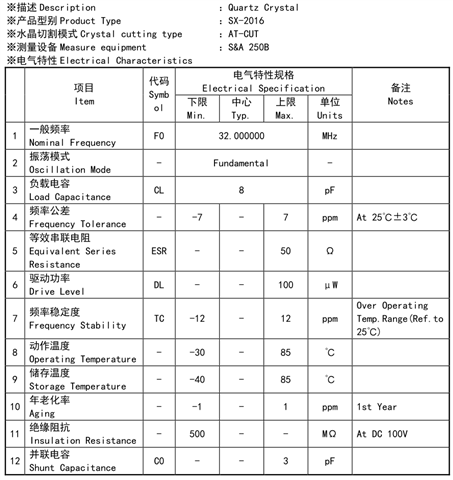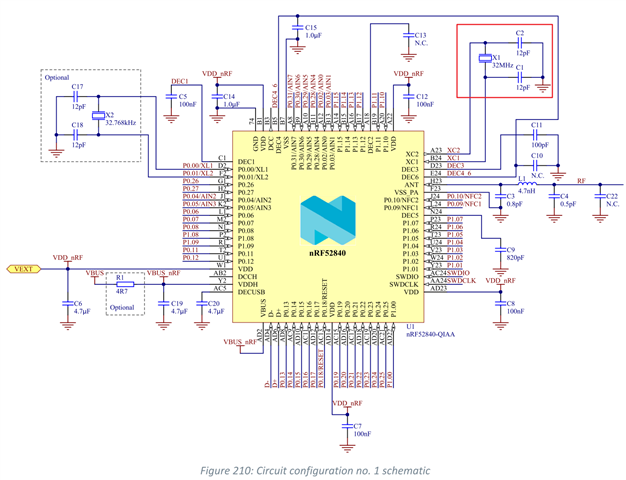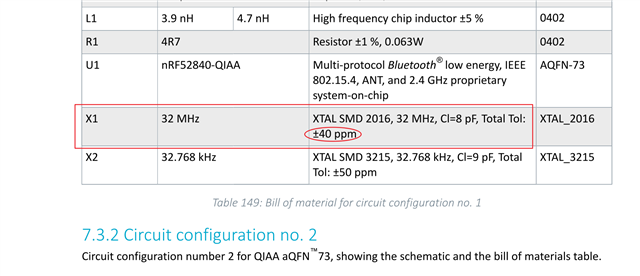Hello, Nordic!
We are old customers of Nordic NRF52840. We have been using NRF52840 since the promotion of NRF52840. We use NRF52840 to make some IoT modules for our customers, mainly for some Tracker and industrial monitoring markets.
But we have some troubles in production. The passing standard of the 32MHz crystal test we made is that the frequency deviation is ±10ppm. But it is difficult to meet, because the crystal is greatly affected by the temperature and the test equipment, and it is easy to exceed the standard, resulting in many defective products (4%).
The NRF52840 datasheet reference design recommended 32MHz crystal requirement is total ±40ppm. Bluetooth low energy,applications, packet length > 200 bytes,the specification recommended crystal total ±30ppm.
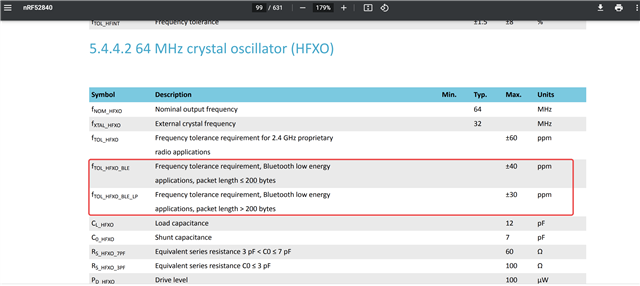
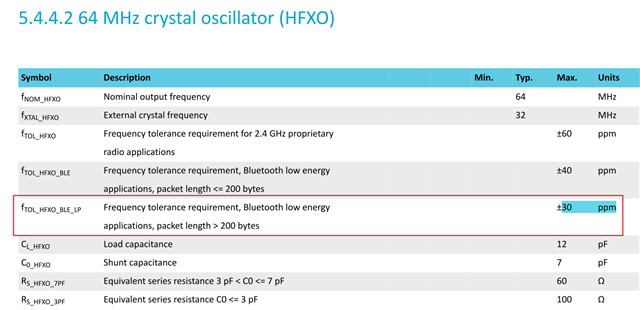
I would like to know:
1. Under what circumstances is it necessary the 32MHz crystal to achieve ±30ppm? Which applications scenarios require packet length > 200 bytes?
2. For general customers, what is the frequency offset requirement for the crystal? Because we also need to consider the influence of the aging of the crystal and the service life of the product.
3. Can we set the crystal frequency at ±15ppm? What are the risks in using it?
Thanks!
Frank Yang



